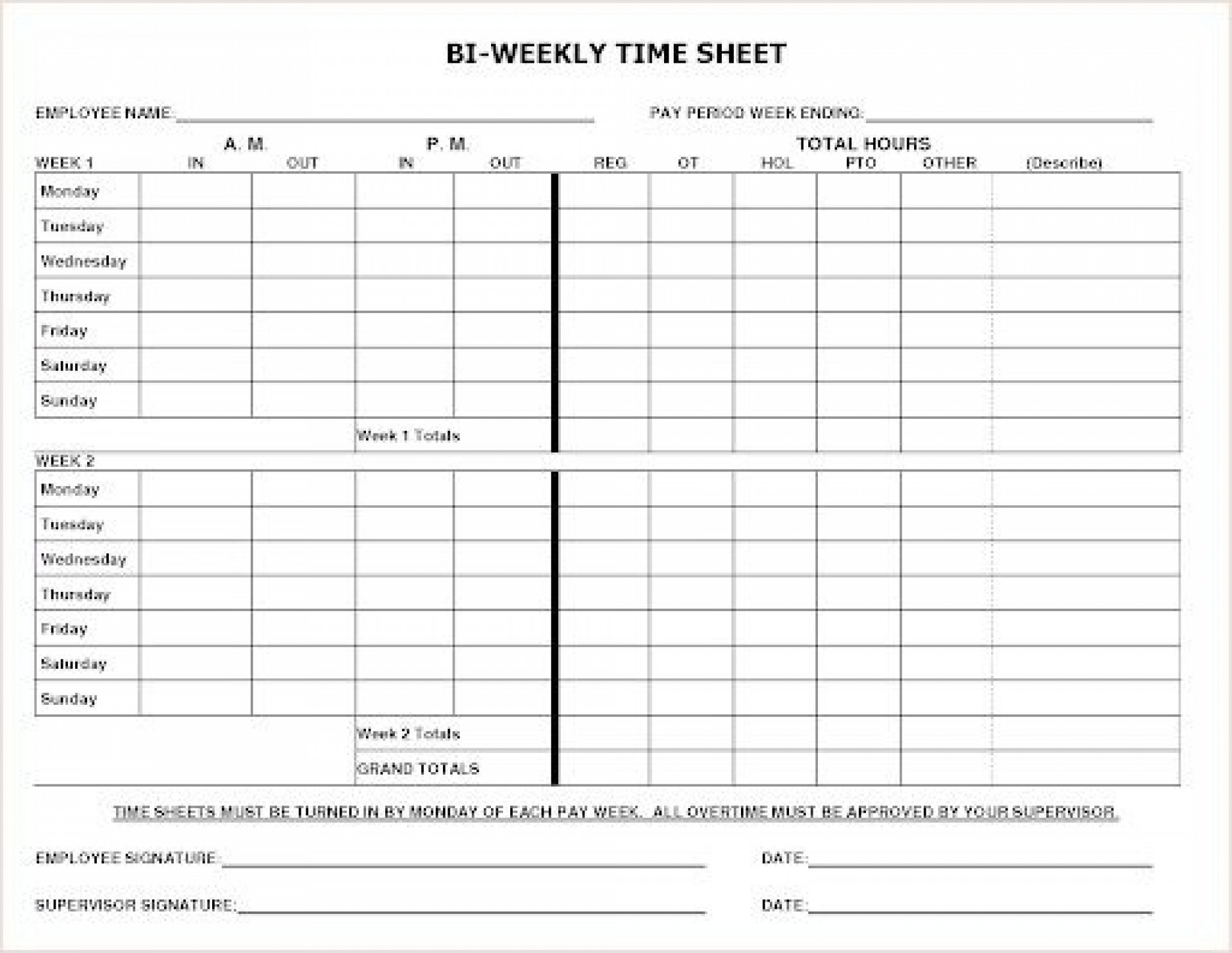Keeping track of employee hours and ensuring accurate payroll processing is crucial for any business. One popular method of tracking time is through bi-weekly timesheets. In this comprehensive guide, we will explore what bi-weekly timesheets are, how they work, why they are important, and how to effectively implement them in your organization.
What is a Bi-Weekly Timesheet?
A bi-weekly timesheet is a document used to record the number of hours an employee has worked over two weeks. It typically includes information such as the employee’s name, job title, and dates of the pay period. The timesheet allows employees to record their daily work hours, including regular hours, overtime, and any other types of time off. It serves as a vital tool for both employees and employers to accurately track and manage work hours.
How Does a Bi-weekly Timesheet Work?
When using a bi-weekly timesheet, employees are required to accurately record their work hours for each day of the pay period. This includes the time they start and end work, any breaks or lunchtime taken, and any additional time off taken during the pay period. At the end of the two weeks, the timesheet is submitted to the employer or payroll department for review and processing.
Employers then use the information provided in the timesheet to calculate employee wages, including regular pay, overtime, and any other applicable factors such as bonuses or deductions. The timesheet serves as a reference point for both the employer and employee to ensure accurate payment and transparency in hours worked.
Why Are Bi-Weekly Timesheets Important?
Bi-weekly timesheets play a crucial role in various aspects of business operations. Here are some reasons why they are important:
- Accurate Payroll Processing: Bi-weekly timesheets ensure that employees are paid accurately based on their actual work hours. This helps prevent any discrepancies or errors in wage calculations.
- Compliance with Labor Laws: Many labor laws require employers to keep accurate records of employee work hours. Bi-weekly timesheets serve as evidence of compliance with these regulations.
- Transparency and Accountability: Timesheets provide transparency in tracking work hours, allowing both employers and employees to have a clear understanding of how time is being utilized.
- Workforce Management: Timesheets help employers manage their workforce more effectively by identifying trends, patterns, and areas where improvements can be made.
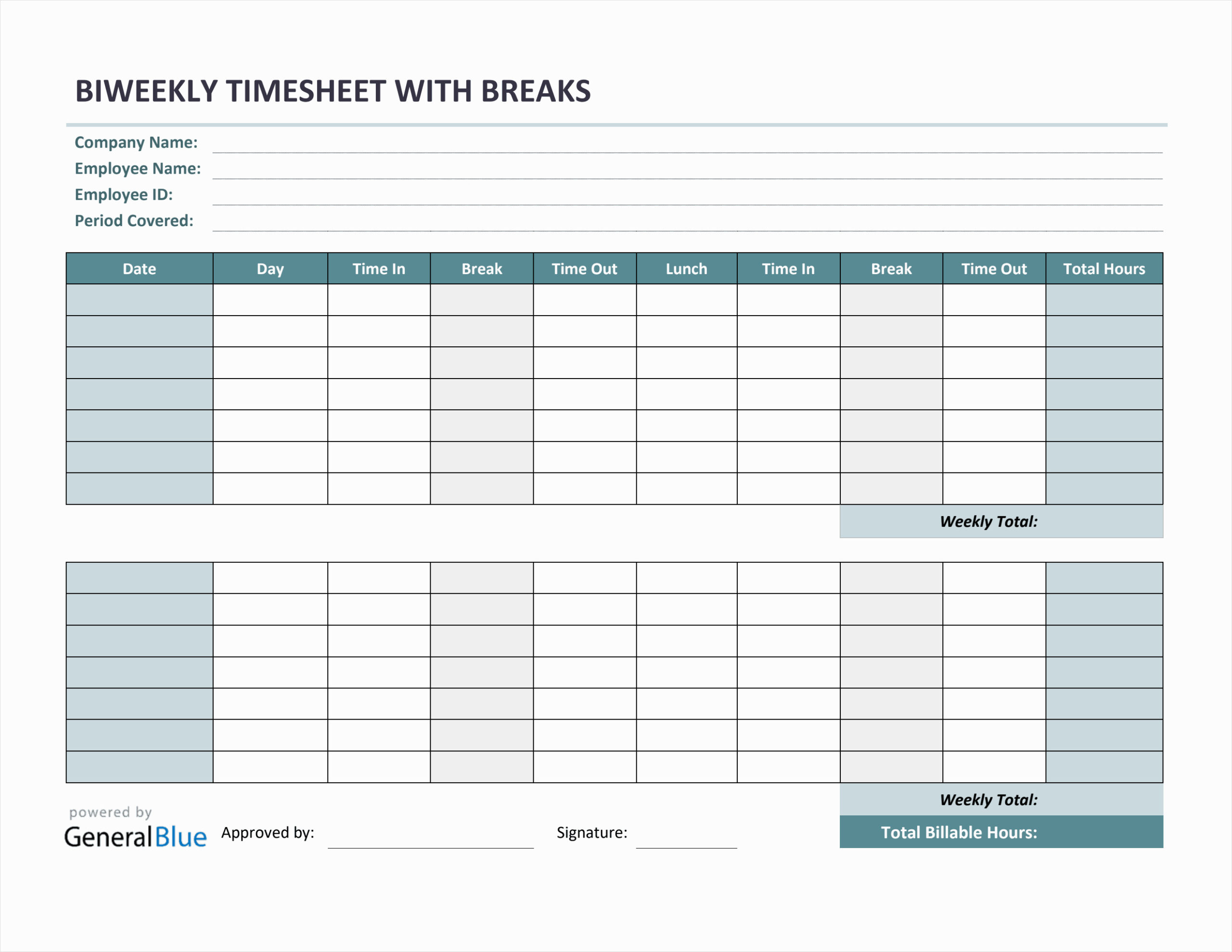
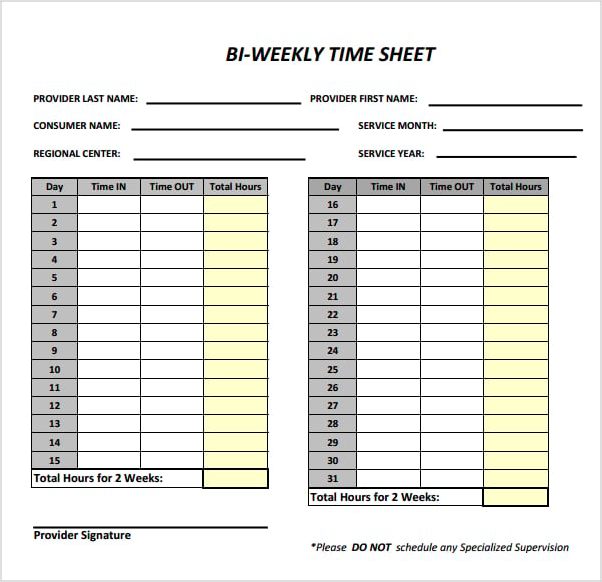
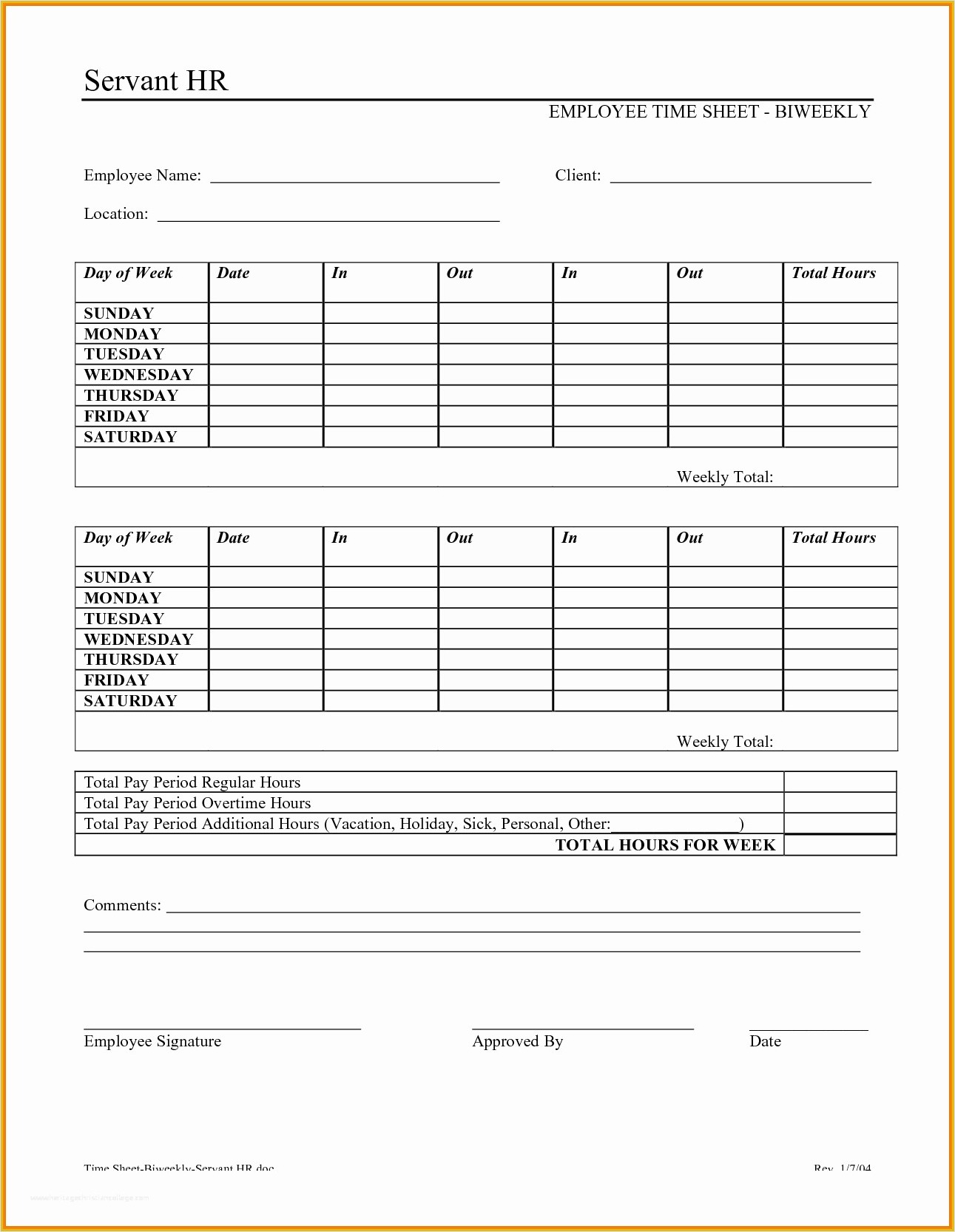
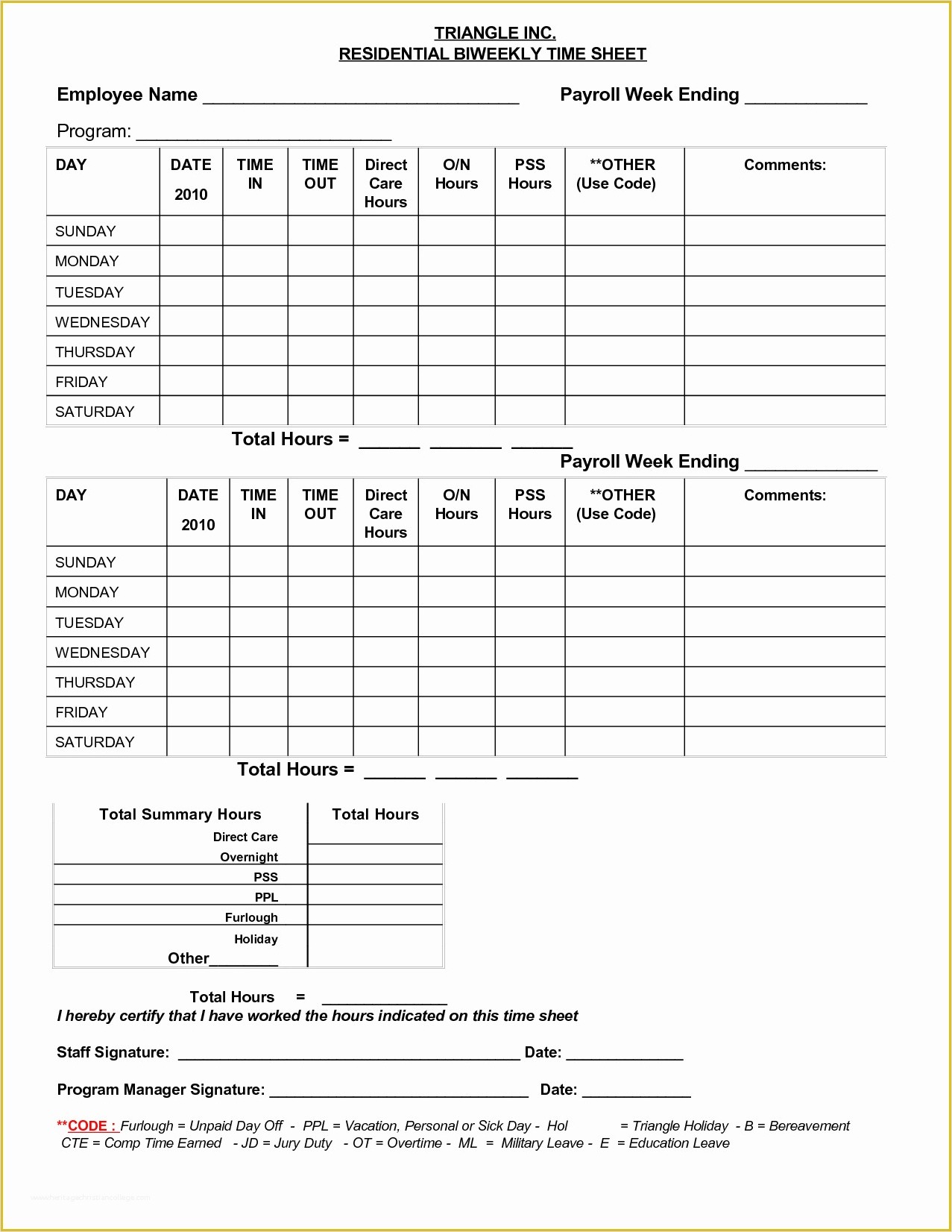
How to Implement Bi-Weekly Timesheets
Implementing bi-weekly timesheets in your organization requires careful planning and communication. Here are steps to effectively implement bi-weekly timesheets:
1. Communicate the Change
Inform your employees about the transition to bi-weekly timesheets and explain the reasons behind the change. Address any concerns or questions they may have and provide clear instructions on how to accurately complete the timesheets.
2. Choose a Timesheet Format
Select a format for your bi-weekly timesheets that suits your organization’s needs. This could be a physical paper timesheet, a digital spreadsheet, or an online time tracking software.
3. Provide Training
Train your employees on how to accurately complete the timesheets and explain any specific requirements or guidelines. Offer support and resources to help them understand the process and ensure consistency.
4. Set Clear Deadlines
Establish clear deadlines for timesheet submission to ensure timely processing of payroll. Communicate these deadlines to employees and provide reminders to avoid any delays or missed submissions.
5. Review and Approve Timesheets
Designate a responsible person or department to review and approve the submitted timesheets. This ensures accuracy and compliance with company policies before processing payroll.
6. Address Discrepancies
If any discrepancies or errors are found in the timesheets, promptly address them with the respective employees. Offer guidance and support to help them correct any mistakes and ensure accurate payroll processing.
7. Analyze and Improve
Regularly review and analyze the data from the bi-weekly timesheets to identify areas for improvement in workforce management, efficiency, and productivity. Use this information to make informed decisions and implement necessary changes.
Conclusion
Implementing bi-weekly timesheets can greatly improve the accuracy and efficiency of your payroll processing while ensuring compliance with labor laws. By following the steps outlined in this guide and providing clear instructions to your employees, you can effectively implement bi-weekly timesheets and streamline your time tracking and payroll processes.
Bi-Weekly Timesheet Template Excel – Download
